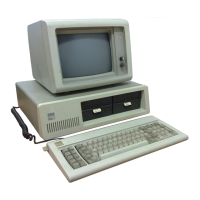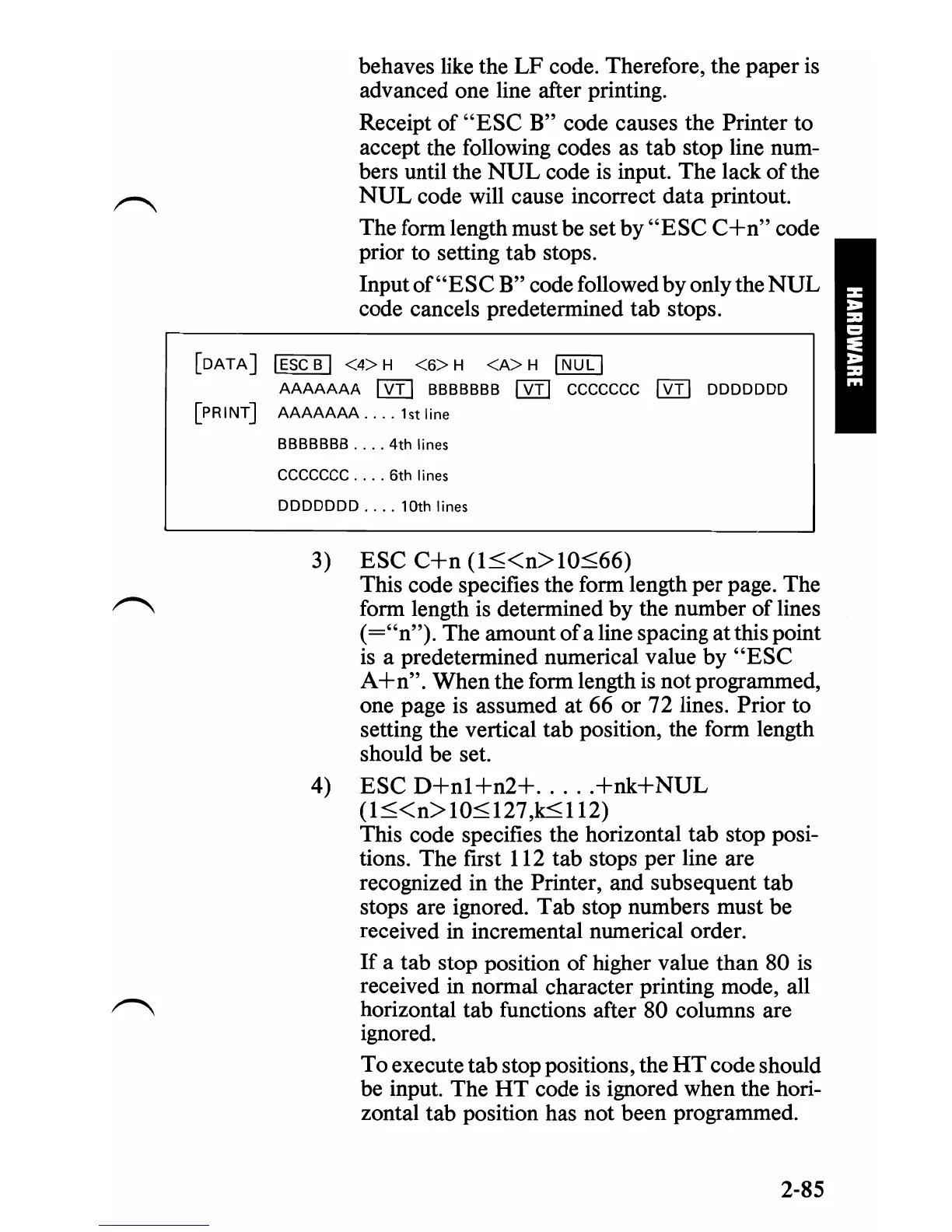behaves like the
LF
code. Therefore, the paper
is
advanced one line after printing.
Receipt
of
"ESC
B" code causes the Printer to
accept the following codes as tab stop line num-
bers until the
NUL
code is input. The lack
of
the
NUL
code will cause incorrect data printout.
The form length must be set by
"ESC
C+n"
code
prior to setting tab stops.
Input
of
"ESC
B" code followed by only the
NUL
code cancels predetermined tab stops.
[DATA]
IEseBI
<4>H <6>H
<A>H
INULI
AAAAAAA
IVTI
BBBBBBB
IVTI
eeeeeee
IVTI
DDDDDDD
[PRINT]
AAAAAAA
....
1st line
BBBBBBB
...
,4th
lines
eeeeeee
....
6th lines
DDDDDDD
....
10th lines
3)
ESC
C+n
(1
«n>
10<66)
This code specifies the form length per page. The
form length is determined by the number
of
lines
(="n").
The amount
of
a line spacing
at
this point
is a predetermined numerical value by
"ESC
A
+n".
When the form length is not programmed,
one page is assumed at 66 or
72
lines. Prior to
setting the vertical tab position, the form length
should be set.
4)
ESC
D+n1
+n2+
.....
+nk+NUL
(1
«n>
10<
127,Ie::; 112)
This code specifies the horizontal tab stop posi-
tions. The first 112 tab stops per line are
recognized in the Printer, and subsequent tab
stops are ignored. Tab stop numbers must be
received in incremental numerical order.
If
a tab stop position of higher value than 80 is
received in normal character printing mode, all
horizontal tab functions after 80 columns are
ignored.
To
execute tab stop positions, the
HT
code should
be input. The
HT
code is ignored when the hori-
zontal tab position has not been programmed.
2-85

